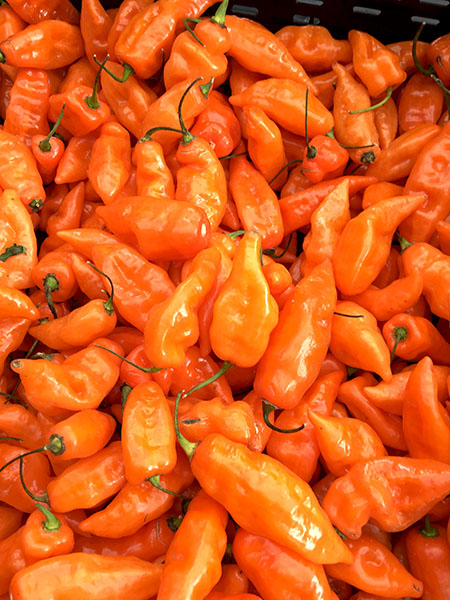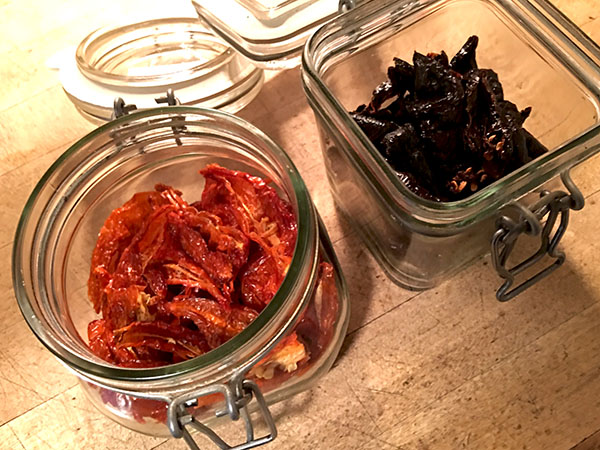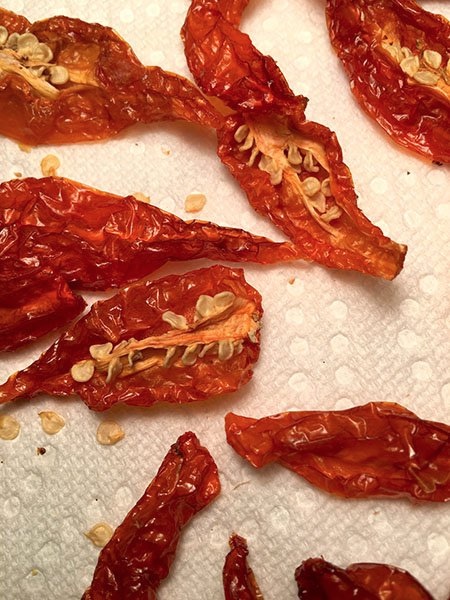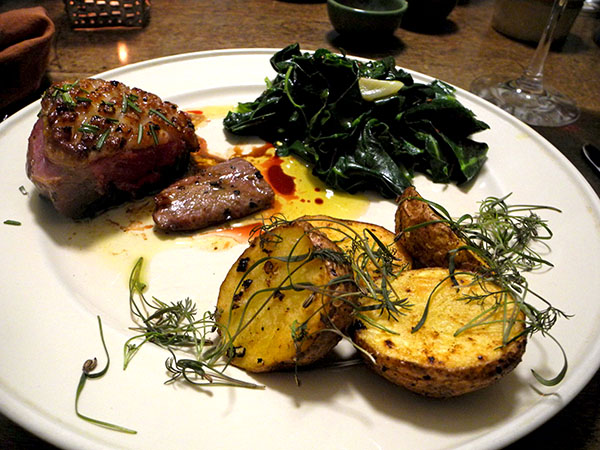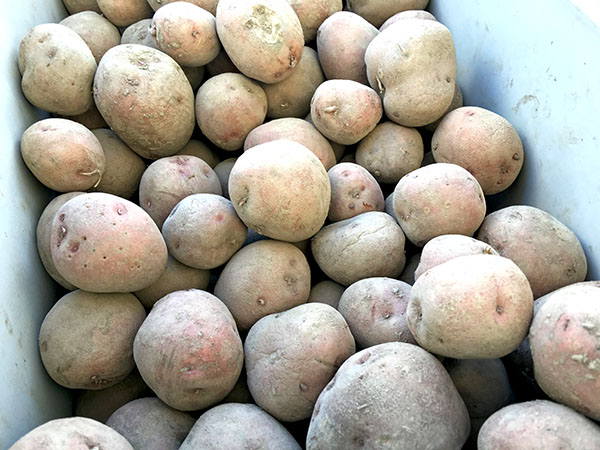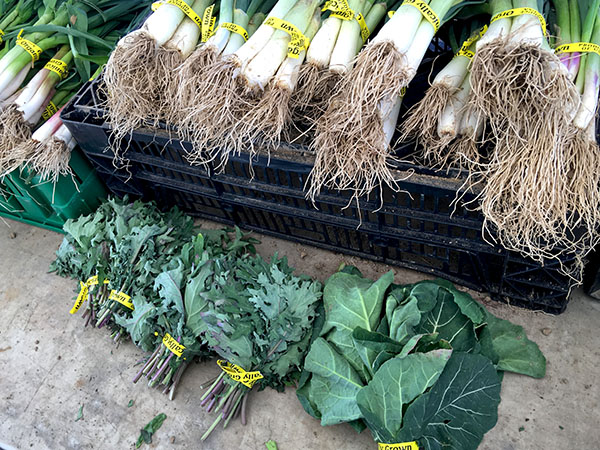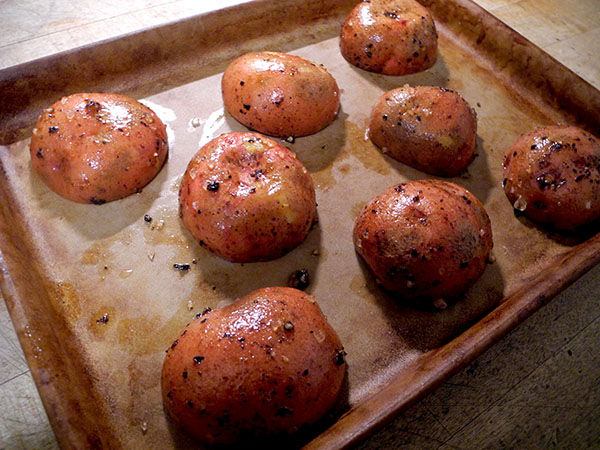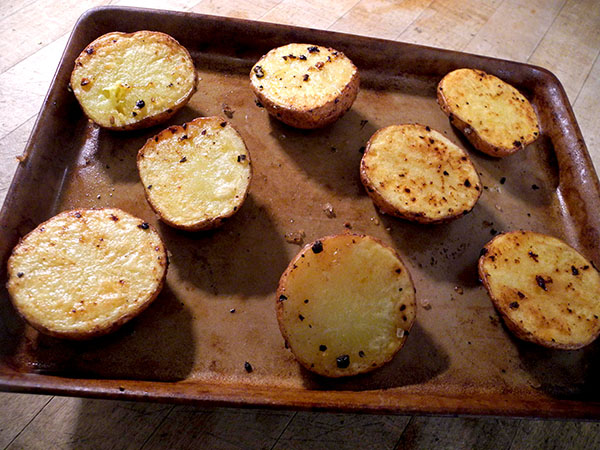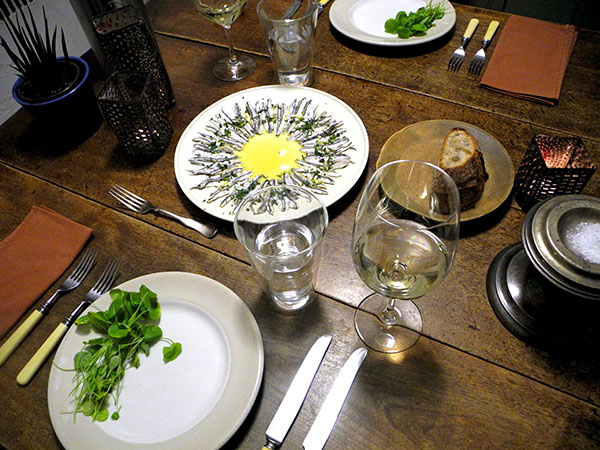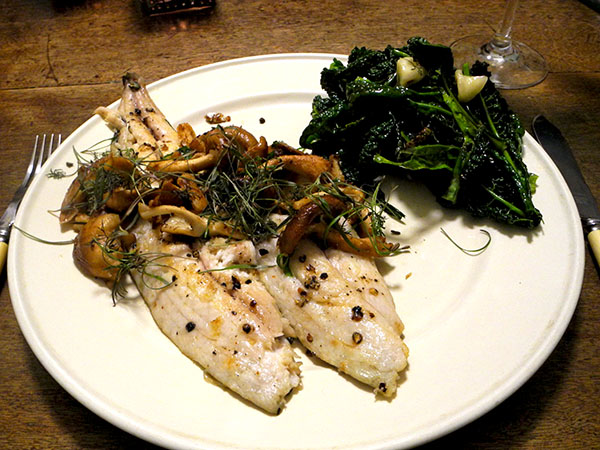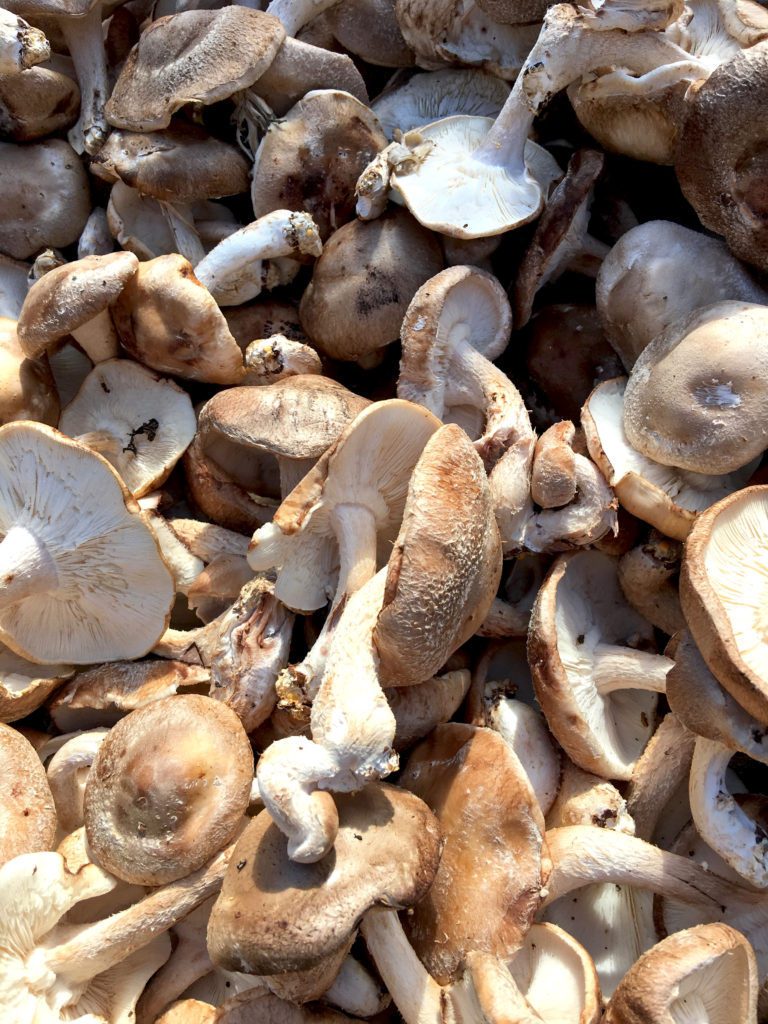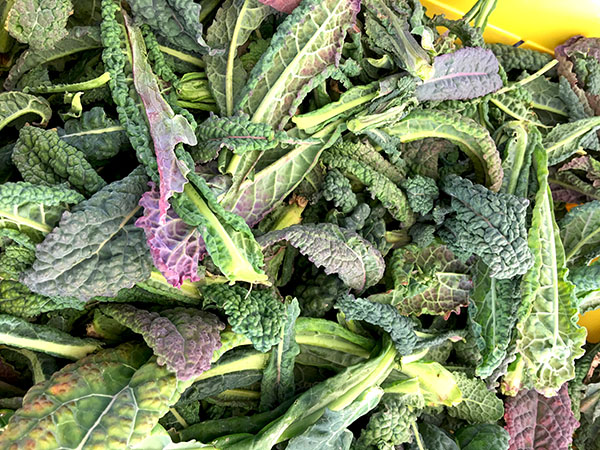
I wrote yesterday about my obsession with Habanada peppers. Later that same day I had a chance to remind myself just why.
I’ve gone through the simple routine of this recipe many times, once, in a small break with the orthodoxy, even introducing a small pinch of the dried orange gold sort. Last night however, maybe because I had become excited writing about these peppers earlier, I splurged, crushing an entire section into the mix of dry oregano and chili pepper I cast into the pan with the squid before they went into the oven.
It was our best experience yet with a recipe already way up there among our favorites. As always, the Habanada itself remained indiscernible, but it contributed a wonderful complexity and richness to the whole.
- a large rectangular enameled cast iron pan heated until quite hot, its cooking surface brushed with olive oil, and, when the oil was also quite hot, about 15 ounces of rinsed and dried squid from P.E. & D.D. Seafood in the Union Square Greenmarket, bodies and tentacles, arranged in it very quickly, immediately sprinkled with some super-pungent dried Sicilian oregano from Buon Italia, part of a dried Sicilian pepperoncino, also from Buon Italia, and an entire section of a home-dried heatless, orange/gold Habanada pepper (purchased fresh from Norwich Meadows Farm last fall), followed by a drizzle of a few tablespoons of juice from a local lemon from Fantastic Gardens of Long Island, and some olive oil, the pan placed inside a pre-heated 400º oven and roasted for 4 or 5 minutes, removed, the squid distributed onto 2 plates, ladled with their cooking juices after they had been transferred to a sauce pitcher, scattered with a little micro bronze fennel from Two Guys from Woodbridge, and served with halves of another, tiny local lemon-lime served on the side of each plate
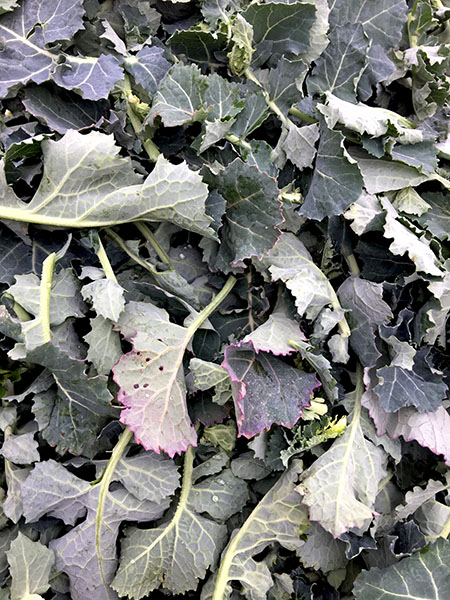
- loose “overwintered broccoli rabe” (aka rapini) from Lani’s Farm, wilted in olive oil flavored with one large garlic clove from Healthway Farms & CSA which had been bruised and heated until beginning to color, seasoned with salt and pepper, divided onto 2 plates and drizzled with more olive oil
- the wine was an Italian (Sicily, Palermo) white, Corvo Insolia 2015 from Philippe Wine and Spirits, on West 23rd Street less than one block from our table, a wine which we have often, and have enjoyed just as often
- the music was that of the still-hugely-neglected Swedish composer, Allan Pettersson, his 1976 Symphony No. 13, Christian Lindberg, Norrkoping Symphony
